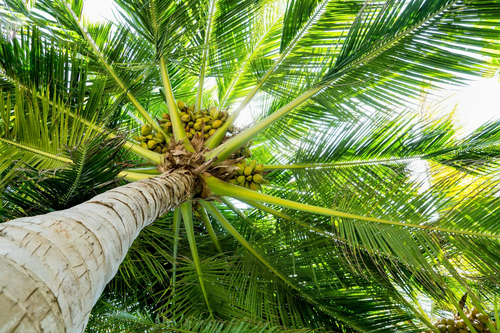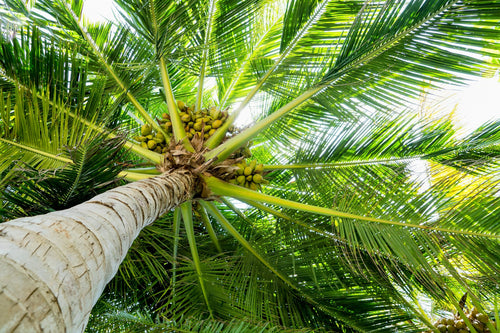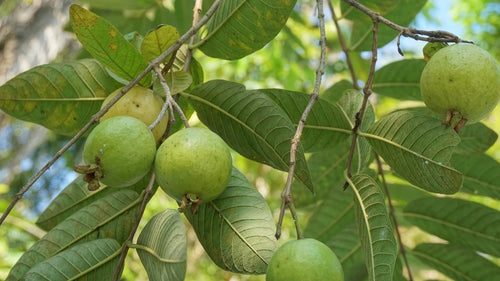Mahindra Lifespace’s tree plantation initiative under the agroforestry concept showcases the company’s commitment to sustainability and environmental conservation. By integrating tree planting with agricultural practices, this initiative creates a harmonious balance between nature and farming, benefiting both the environment and local communities. Mahindra Lifespace collaborates with farmers to plant native, climate-resilient tree species alongside crops, promoting biodiversity, improving soil fertility, and enhancing water retention. The agroforestry model helps mitigate the effects of climate change by sequestering carbon and preserving the ecosystem, while also offering farmers additional sources of income and improved land productivity. This initiative is a key part of Mahindra Lifespace’s broader vision of sustainable urban development, creating a greener future by fostering ecological balance and supporting rural livelihoods.
Advantages Of Agroforest
Enhanced Biodiversity
Agroforestry promotes the planting of a variety of tree species alongside crops, which helps to restore and preserve local ecosystems. This diversification of plants leads to richer biodiversity, providing habitats for wildlife and supporting the overall health of the environment. By planting native species, Mahindra Lifespace fosters a more resilient ecosystem that can better withstand changes in weather and other environmental stressors.
Soil Health and Fertility Improvement
The integration of trees in agricultural land improves soil structure and fertility. Trees prevent soil erosion by stabilizing the soil with their root systems, which helps retain moisture and prevents runoff. Moreover, fallen leaves and organic matter from the trees enrich the soil with essential nutrients, making it more fertile for growing crops. This results in healthier land and improved productivity for farmers.
Carbon Sequestration
One of the primary benefits of agroforestry is its role in mitigating climate change. The trees planted in the initiative capture and store carbon dioxide from the atmosphere, acting as carbon sinks. This helps reduce the overall carbon footprint of the region and contributes to global efforts in combating climate change.
Water Conservation
The presence of trees in agroforestry systems helps improve water retention in the soil and reduces water evaporation. Tree roots help retain moisture and improve water infiltration, reducing the need for excessive irrigation. This is particularly beneficial in areas where water scarcity is a concern, supporting more sustainable agricultural practices.
Economic Benefits for Farmers
Agroforestry provides additional income opportunities for farmers by diversifying their sources of revenue. In addition to their primary crops, farmers can harvest timber, fruits, or other tree products, enhancing their overall income. This also provides a buffer against fluctuating crop prices and market uncertainties, promoting financial stability for local farmers.
Improved Land Productivity
The combination of trees and crops in agroforestry systems enhances land productivity. The trees help improve the overall fertility of the land and create a more balanced environment for crops to thrive. This leads to higher crop yields and more sustainable use of land over the long term, which is beneficial for both the environment and the farmers’ livelihoods.
Sustainable Land Use Practices
By adopting agroforestry, Mahindra Lifespace promotes sustainable land use practices that combine agricultural and forestry practices. This approach reduces the need for deforestation, conserves natural resources, and helps maintain ecological balance. It contributes to a more sustainable model of land management, ensuring that the land remains productive and healthy for future generations.
Climate Resilience
Agroforestry enhances the resilience of land to the impacts of climate change. The trees act as windbreaks, reduce temperature extremes, and protect crops from droughts or floods. This makes agricultural systems more adaptable and robust in the face of unpredictable weather patterns, ensuring the long-term sustainability of farming in the region.
Community Empowerment
The initiative not only benefits the environment but also empowers local communities. By involving farmers in the process and offering training on agroforestry practices, Mahindra Lifespace helps improve their knowledge and skillset. This fosters community participation and provides farmers with the tools to implement sustainable farming practices, improving their quality of life.
Long-Term Environmental Impact
Agroforestry is a long-term solution to environmental degradation. The tree planting initiative by Mahindra Lifespace contributes to reforestation efforts, helping restore ecosystems over time. The multi-faceted benefits of agroforestry ranging from carbon sequestration to water conservation ensure a lasting, positive impact on the environment, making it a sustainable practice for the future.
Activities During Tree Plantation
During Mahindra Lifespace’s tree plantation initiative, all plantation activities are carried out by local farmers in line with the agroforestry concept. The farmers were involved in, preparing the land, and planting the selected suitable native tree species alongside their existing crops. The initiative focuses on creating a sustainable and biodiverse ecosystem where trees are integrated into agricultural landscapes to promote soil health, enhance water retention, and provide additional income sources. The farmers also ensure proper care of the newly planted trees by watering and maintaining them, while also benefiting from the long-term environmental and economic advantages offered by agroforestry. This collaborative approach between Mahindra Lifespace and local farmers not only promotes sustainability but also strengthens community involvement and empowers farmers to adopt eco-friendly agricultural practices.
Tree Plantation Purpose
Mahindra Lifespace’s tree plantation initiative in the agroforestry manner contributes significantly to several Sustainable Development Goals (SDGs)
1. SDG 1: No Poverty
The initiative helps reduce poverty by improving the livelihoods of farmers in rural areas. By providing additional sources of income through agroforestry, farmers can increase their financial stability. The initiative enhances land productivity and provides opportunities for community members to develop new skills, ultimately contributing to poverty reduction and economic empowerment for rural populations.
2. SDG 2: Zero Hunger
Through agroforestry, Mahindra Lifespace supports sustainable agriculture by diversifying farmers' income sources. The trees planted alongside crops not only help improve soil fertility but also offer additional products such as timber, fruits, or medicinal plants, contributing to food security and better nutrition. This diversification of crops and income sources ensures that farmers can withstand market fluctuations and adverse climatic conditions, promoting long-term food security.
3. SDG 6: Clean Water and Sanitation
The tree plantation initiative helps in water conservation by improving water retention in the soil. Tree roots enhance soil structure and reduce water runoff, leading to better water infiltration and retention. This is particularly beneficial in regions facing water scarcity. By maintaining healthy soils and promoting water-efficient agricultural practices, the initiative contributes to the sustainable management of water resources, improving access to clean water for agricultural and community needs.
4. SDG 7: Affordable and Clean Energy
Trees planted as part of the agroforestry initiative can provide bioenergy resources, such as firewood or biomass, which can be used for cooking and heating. By promoting the sustainable use of these resources, Mahindra Lifespace supports access to clean and affordable energy for rural households, reducing reliance on unsustainable fuel sources and improving energy security for local communities.
5. SDG 8: Decent Work and Economic Growth
Mahindra Lifespace’s agroforestry initiative creates new economic opportunities for farmers. By providing training and resources for integrating tree planting with their crops, farmers can increase their income through the sale of tree products (such as fruits, timber, or medicinal plants). This diversification of income sources promotes economic resilience, reduces dependence on single crop farming, and supports sustainable rural livelihoods, contributing to decent work opportunities for local communities.
6. SDG 12: Responsible Consumption and Production
The agroforestry initiative promotes sustainable land and resource use by integrating trees with farming. This approach reduces the need for harmful agricultural practices, such as excessive use of chemical fertilizers and pesticides, by encouraging natural methods of soil fertility and pest management. Agroforestry also promotes responsible consumption by supporting the sustainable production of wood, fruits, and other plant products, which can be harvested without depleting natural resources, fostering a circular and sustainable economy.
7. SDG 13: Climate Action
Mahindra Lifespace’s agroforestry initiative directly addresses climate change by contributing to carbon sequestration. The trees planted act as carbon sinks, absorbing CO2 from the atmosphere, which helps reduce the overall carbon footprint. This initiative plays a role in mitigating the effects of climate change by promoting practices that lower greenhouse gas emissions and enhance resilience against climate-related impacts, such as droughts and floods.
8. SDG 15: Life on Land
The agroforestry model supports biodiversity and ecosystem health by integrating trees with agricultural crops. This combination helps restore degraded land and prevents soil erosion, while promoting the growth of a variety of plant and animal species. By planting native tree species, the initiative contributes to the restoration of natural habitats and the conservation of local flora and fauna, fostering sustainable land use and reducing deforestation.
ESGs Achieved Through Agroforest
Mahindra Lifespace’s tree plantation initiative in the agroforestry concept significantly contributes to environmental sustainability. By planting native tree species alongside crops, the initiative helps restore soil health, prevent erosion, and improve water retention in the land. The trees also play a critical role in carbon sequestration, absorbing carbon dioxide from the atmosphere and reducing the overall carbon footprint. This fosters biodiversity by creating ecosystems where a variety of plants and animals can thrive, and the agroforestry model supports sustainable land management by reducing the need for harmful agricultural practices. Overall, the initiative promotes environmental stewardship and resilience against climate change.
The social impact of Mahindra Lifespace’s tree plantation initiative is profound, as it directly benefits the local farming communities. By engaging farmers in agroforestry practices, the initiative creates new income opportunities through the sale of timber, fruits, and other tree products, improving their financial stability. The project also provides training and resources to help farmers enhance their agricultural practices, empowering them with skills and knowledge for sustainable farming. This contributes to improved livelihoods, strengthens community participation, and fosters social development. Additionally, by promoting food security through diversified farming systems, the initiative supports the health and well-being of rural populations.
Mahindra Lifespace’s partnership with Grow Billion Trees has significantly enhanced the governance aspect of its tree plantation initiative in the agroforestry concept by ensuring transparency, accountability, and ethical practices throughout the process. Through this collaboration, Mahindra Lifespace adheres to established environmental regulations and sustainability standards while promoting responsible land use and forest management. Grow Billion Trees, with its expertise in large-scale reforestation and agroforestry projects, has helped create clear guidelines and monitoring frameworks, ensuring that tree planting is done effectively and sustainably. The partnership fosters a transparent approach, with regular assessments and reporting on the progress and impact of the initiative, ensuring compliance with environmental goals and corporate governance principles. This collaboration not only strengthens the governance aspect of the project but also builds trust with stakeholders, communities, and regulatory bodies, contributing to the long-term success of Mahindra Lifespace’s sustainable development efforts.
Mahindra Lifespace’s tree plantation initiative in the agroforestry concept focuses on promoting sustainable land use practices by integrating tree planting with agricultural crops. The initiative involves local farmers, who carry out all plantation activities, including selecting native tree species, preparing the land, and planting trees alongside their crops. This approach improves soil health, conserves water, enhances biodiversity, and provides farmers with additional income opportunities through the sale of timber, fruits, and other tree products. The initiative also contributes to climate change mitigation by sequestering carbon and supports the long-term sustainability of agricultural land. Through its partnership with Grow Billion Trees, Mahindra Lifespace ensures that the project aligns with best practices in governance, promoting transparency, accountability, and responsible land management. Overall, the initiative not only fosters environmental sustainability but also empowers rural communities, creating a win-win situation for both the planet and local farmers.




















